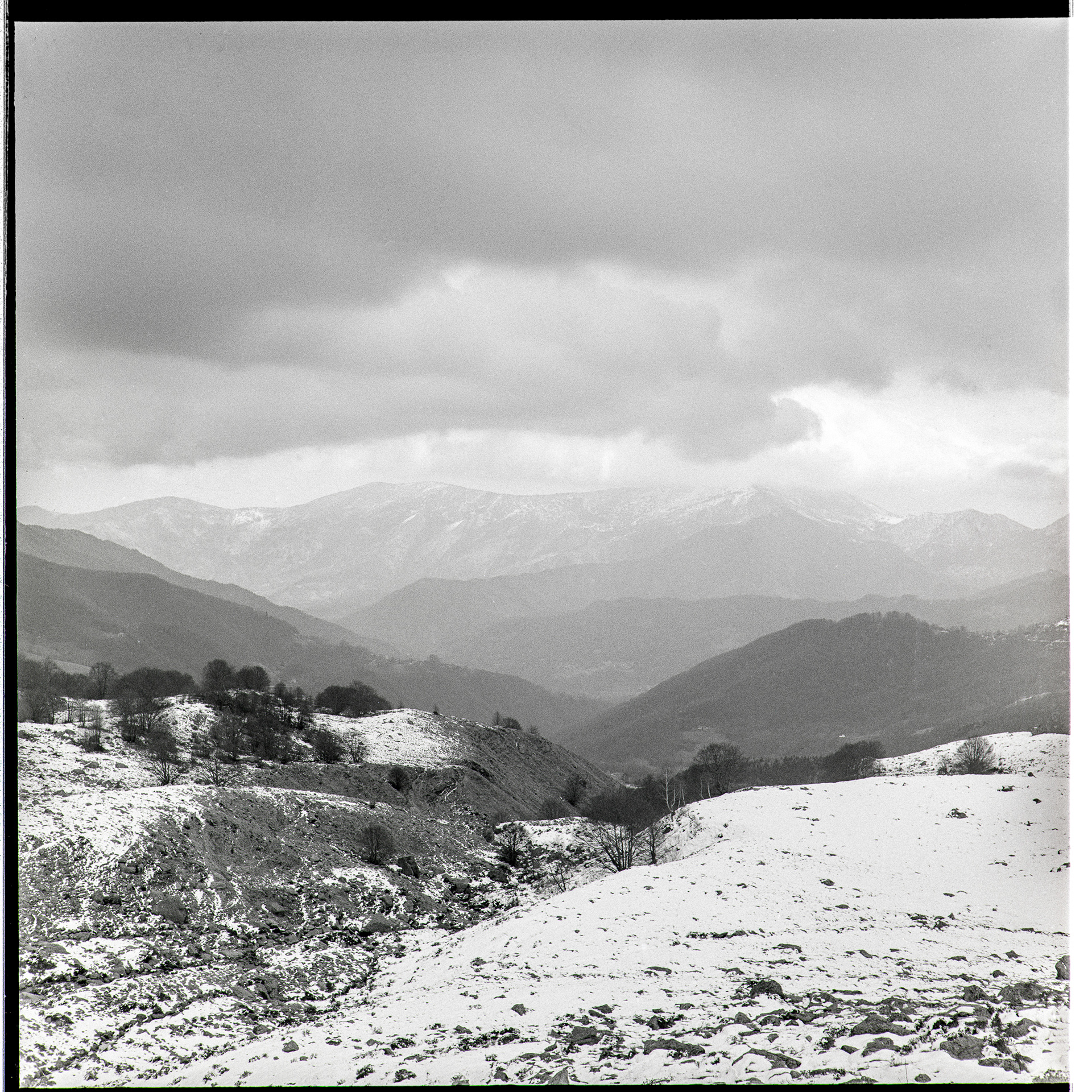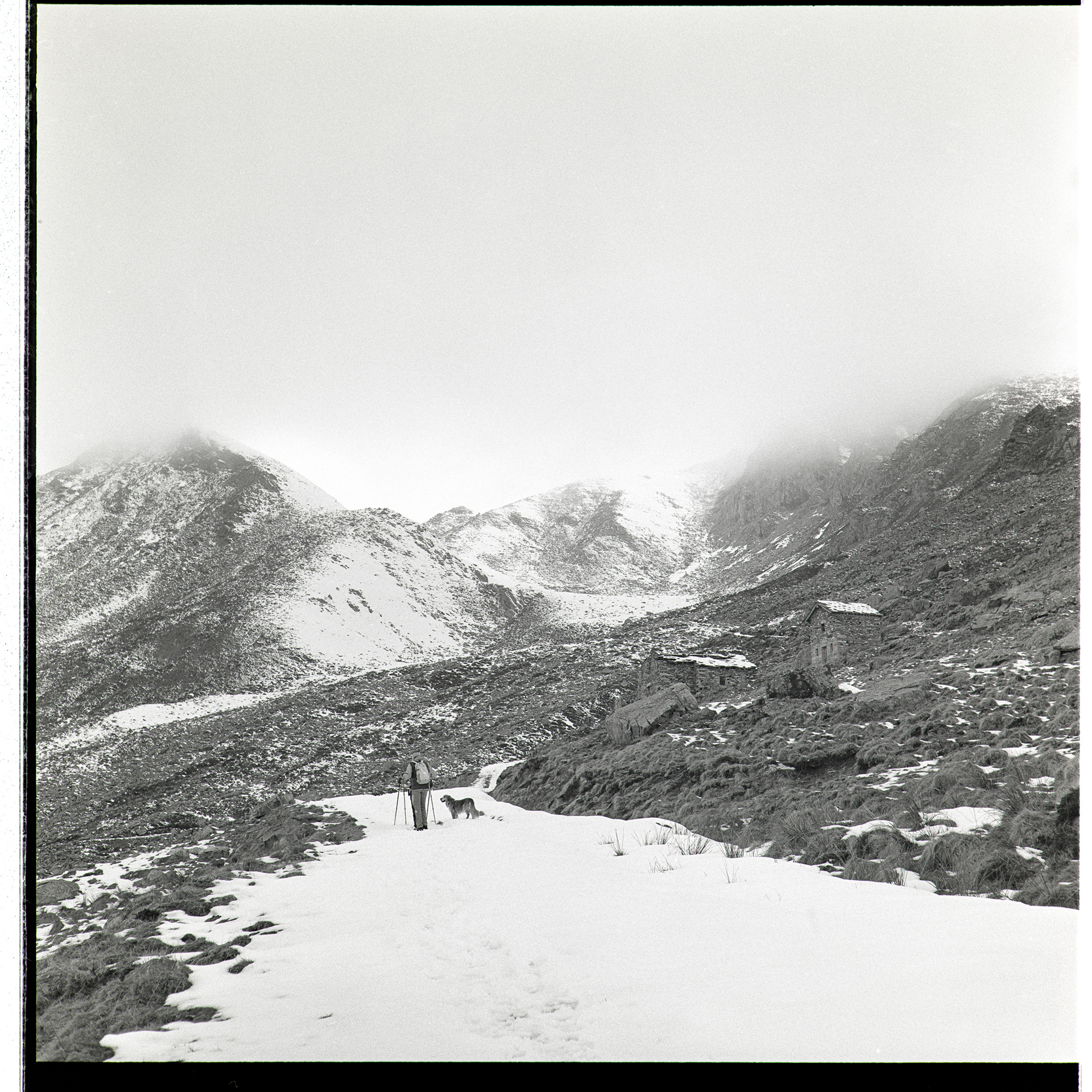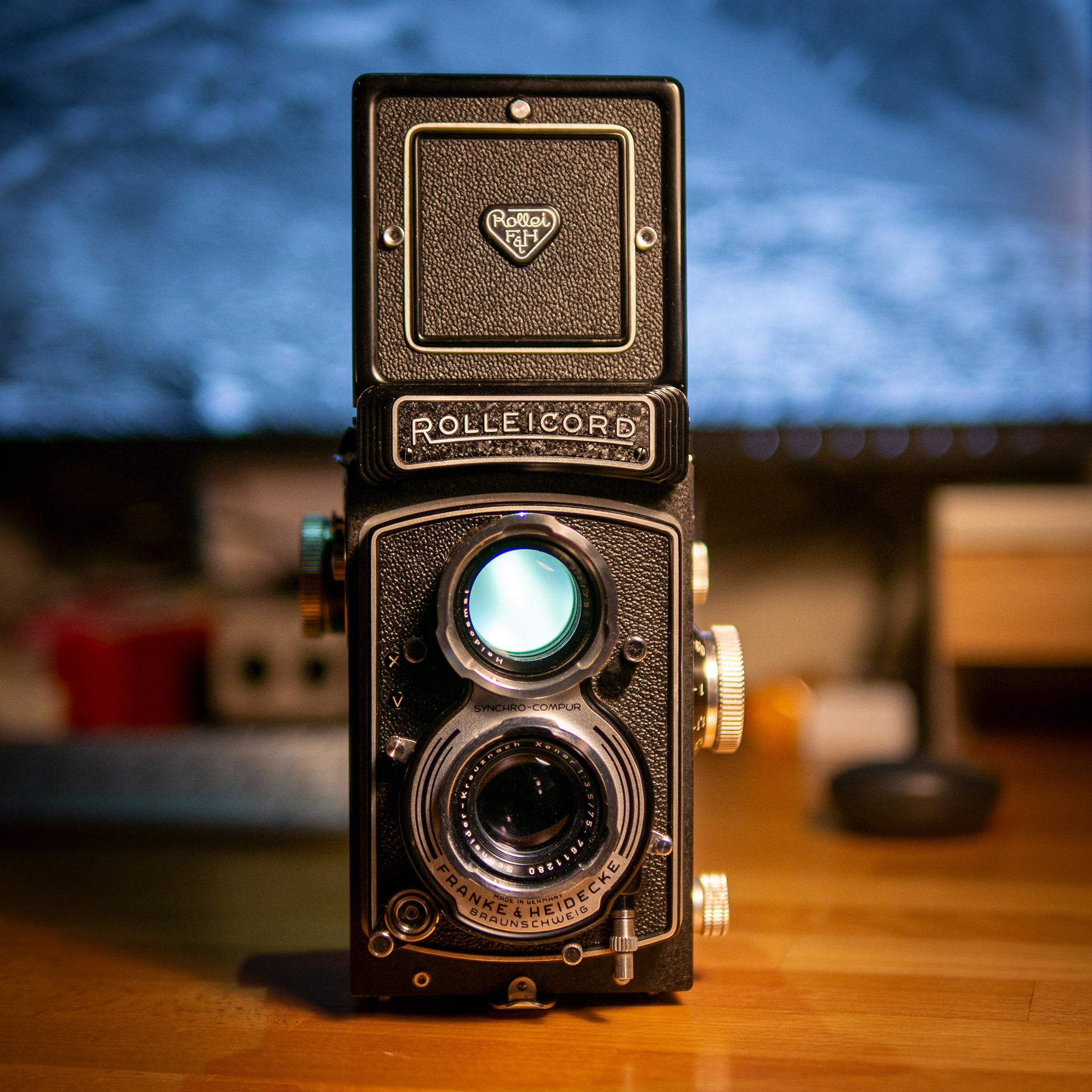It had been many years since I last shot in analog, and the classic twin-lens reflex cameras have always been at the top of my wish list. Being able to photograph while looking at the image on the ground glass screen is an experience that every photographer should try. The Rolleiflex, made by Franke & Heidecke, are generally considered the quintessential machines of this type. Many of the greatest photographers of the 20th century have used these true gems, both mechanically and optically, thanks to the lenses from Zeiss (especially the legendary 80mm Planar f2.8) and Schneider-Kreuznach (the Xenar 75mm f3.5). Today, these machines have reached high prices, but alongside the Rolleiflex, Franke & Heidecke also produced a "lesser" model: the Rolleicord. In reality, there is very little "lesser" about it: perhaps a slightly simpler mechanism, but precisely for this reason, Rolleicords are lighter and more practical tools, very robust and optically superb. Just look online at the debates over the various renditions of these lenses; the most common opinion is that on paper, the Zeiss Planars are better, but in practical terms, when it comes to prints, this difference is intangible and attributable only to the different characters of each optic. I managed to find a Rolleicord Vb (1963) in excellent condition and wanted to try it out during one of my excursions. For my first roll, I chose Ilford HP5 Plus (400 iso) in black and white. I soon realized that 400 iso, during a day in the snow (albeit cloudy), might not be the best choice, considering that the maximum shutter speed on the Rolleicord is 1/500th of a second. However, with relatively small apertures and thanks to the film's excellent light retention, I managed to take some shots without too much trouble. Once I obtained the negatives from the lab, I scanned them, and the result is a series of images with remarkable detail and a unique rendering, which is difficult to achieve with a digital camera.


